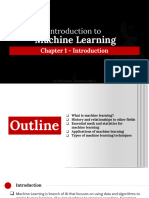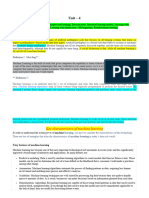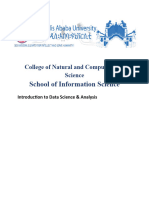0% found this document useful (0 votes)
25 views25 pagesMachine Learning Life Cycle
The document provides an overview of the Machine Learning life cycle, which includes steps such as data gathering, preparation, analysis, model training, testing, and deployment. It discusses various types of machine learning, including supervised, unsupervised, semi-supervised, and reinforcement learning, along with their applications and advantages. Additionally, it highlights the importance of concept learning in recognizing patterns and generalizing from data.
Uploaded by
indiraniCopyright
© © All Rights Reserved
We take content rights seriously. If you suspect this is your content, claim it here.
Available Formats
Download as DOCX, PDF, TXT or read online on Scribd
0% found this document useful (0 votes)
25 views25 pagesMachine Learning Life Cycle
The document provides an overview of the Machine Learning life cycle, which includes steps such as data gathering, preparation, analysis, model training, testing, and deployment. It discusses various types of machine learning, including supervised, unsupervised, semi-supervised, and reinforcement learning, along with their applications and advantages. Additionally, it highlights the importance of concept learning in recognizing patterns and generalizing from data.
Uploaded by
indiraniCopyright
© © All Rights Reserved
We take content rights seriously. If you suspect this is your content, claim it here.
Available Formats
Download as DOCX, PDF, TXT or read online on Scribd
/ 25
























































































